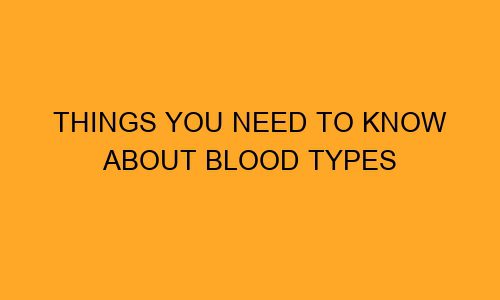Blood is a piece of human DNA used for various purposes. Their main uses include distributing nutrients throughout the body and helping doctors determine an individual’s health condition. While every human body contains blood, it has unique traits, including different blood types.
Blood types are used to group blood depending on the antigens on the surface of the red blood cells (RBC). Antigens are molecules and can be either proteins or sugars and have various functions that play a role in the immune system’s defense mechanism. Its types and features vary between individuals due to small genetic differences.
Knowing your blood type is essential to your healthcare needs, especially when searching for a match for a blood transfusion. Go more in-depth about blood types in this blog, covering things you need to know about them.
Blood type make
The main components of blood include red and white blood cells, plasma, and platelets. As mentioned earlier, the blood group your blood belongs to depends on which antigens are on the surface of your RBCs. Scientists use two types of antigens to classify blood types: Rh antigens and ABO antigens.
Main blood types
Main blood types
Your blood type is determined once you’re born, and if you’re somehow unaware of what it is, you can have your blood drawn to find out. For convenience, you can get mobile phlebotomy services to draw your blood sample. The ABO is the most well-known system used for grouping blood types.
Here are the four ABO blood types:
Group A
Blood type A contains A antigen on the surface of its RBCs, and its plasma has an anti-B antibody that attacks blood cells containing B antigen.
Group B
The surface of RBCs of blood type B contains B antigen with anti-A plasma antibody that attacks blood cells containing A antigen.
Group AB
Blood type AB has RBCs with both A and B antigens, with plasma that doesn’t contain anti-A or anti-B antibodies. Therefore, individuals with this blood type can receive blood from any ABO blood type.
Group O
The plasma of blood type O contains both anti-A and anti-B, but its RBCs surfaces don’t have A or B antigens. Since no antigen is present, individuals with blood type O can also receive any ABO blood type.
Besides the ABO system, doctors also consider the Rhesus (Rh) system for grouping blood types because some RBCs have the RhD antigen, also known as the Rh factor. So if the RBCs have them, they are RhD positive and negative if they don’t.
Since both the ABO and Rh systems are accounted for when grouping blood types, there are eight main blood types in the ABO/Rh group system:
- A-positive (A+)
- A-negative (A-)
- B-positive (B+)
- B-negative (B-)
- AB-positive (AB+)
- AB-negative (AB-)
- O-positive (O+)
- O-negative (O-)
Blood type testing
A blood test can determine a person’s blood type. A lab technician mixes the blood sample drawn from a person’s arm with three different substances to see how they react. Each substance will contain A antibodies, B antibodies, or Rh factor.
Each antibody will cause a different reaction in each case. Lab technicians will observe them to identify a person’s blood type.
Summary
There are eight main blood types that can be determined by a blood type test. It’s important to know what yours is to help you receive the blood you need for treatment procedures.
Author’s Bio:
Though not a medical professional, Hodge Racter knows a lot about health and medical topics, including on-demand modern laboratory services. When not writing, he spends his time with his wife and two dogs.

